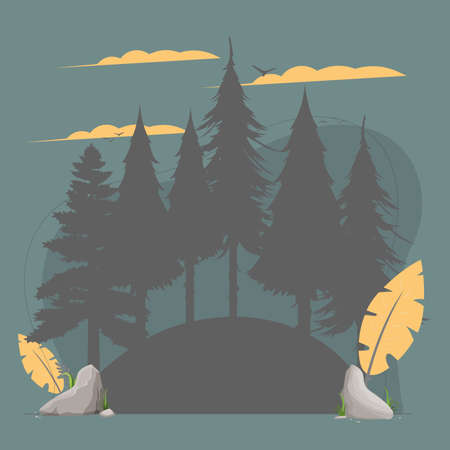Introduction: Embracing the Mourne Mountains
Rising proudly along the southeast coast of Northern Ireland, the Mourne Mountains cast a spell over all who venture near. Here, ancient granite peaks tumble into lush valleys and wild heathland, their rugged silhouettes often shrouded in mist and legend. The Mournes are more than just a landscape—they are woven into the fabric of local life, whispered about in old folk tales and celebrated in song. Steeped in history, these mountains have witnessed centuries of human endeavour, from Neolithic settlers to industrious stone wall builders crafting the famous Mourne Wall. Today, they remain a cherished sanctuary for walkers, poets, and dreamers alike. Their allure lies not just in their beauty but in their ever-changing character: golden with gorse in spring, cloaked in purple heather come late summer, or dusted with snow in winter’s hush. For those who seek adventure or solace, the Mourne Mountains promise an experience shaped by both nature’s grandeur and the enduring spirit of Northern Irish culture.
2. The Rhythm of the Seasons: Mournes Through the Year
Each step taken across the Mourne Mountains is a brushstroke upon a living canvas, one that shifts with every passing season. The Mournes are never quite the same twice, offering a unique invitation to return again and again, to witness their changing moods and colours.
Spring: Bluebell Awakening
As winter’s chill recedes, the Mournes come alive with the gentle stirrings of spring. Verdant shoots burst through the softened earth, carpeting ancient woodlands and hillside paths with wild bluebells. Their delicate violet blooms create an almost otherworldly haze beneath budding trees, while skylarks trill overhead, heralding longer days. Streams run lively with snowmelt, inviting walkers to pause and savour the freshness in the air—a subtle promise of adventures yet to come.
Summer: Lush Greens and Long Evenings
By summer, lush grasses ripple in mountain breezes and heather scents drift on warm air. The Mournes bask in golden sunlight, their granite tors standing proud against a sky that seems impossibly blue. Days are long and forgiving; there’s time to linger atop Slieve Donard or rest by a sparkling lough as sheep graze contentedly nearby. This is when picnics taste sweetest and rambles often end with a well-earned pint in a cosy village pub.
Autumn: A Tapestry of Gold
Come autumn, the mountains don robes of russet and gold. Bracken turns fiery beneath your boots while rowan berries glow scarlet along stony tracks. There’s a crispness to the air that sharpens every view—distant peaks are etched more clearly, and mist drapes itself over valleys at dawn. Walkers crunch through fallen leaves, each footstep echoing the quiet sense of change as summer’s energy gives way to autumnal calm.
Winter: Enchantment in Stillness
Winter transforms the Mournes into a place of hushed enchantment. Snow settles softly on crags and ridges, muffling sound and lending a gentle magic to familiar paths. Frost patterns lace stone walls and icicles dangle from branches along frozen streams. It’s a time for sturdy boots and flask-warmed hands, for solitary reflection beneath pale skies—when even the wind seems respectful of nature’s quiet artistry.
A Year in the Mourne Mountains: Seasonal Highlights
| Season | Scenery | Wildlife & Experiences |
|---|---|---|
| Spring | Bluebell carpets, budding trees | Lambs frolicking, birdsong returns |
| Summer | Lush greenery, clear skies | Heather in bloom, evening rambles |
| Autumn | Golden bracken, red berries | Crisp air, migrating birds |
| Winter | Snow-dusted peaks, icy streams | Peaceful solitude, frosty mornings |
The true beauty of hiking the Mourne Mountains lies not only in its scenery but also in its ever-changing character—a landscape that rewards those who return in all weathers and moods. Whether you seek vibrant life or tranquil stillness, each season offers its own distinct welcome amidst these storied hills.

3. Favourite Routes and Hidden Tracks
Amongst the craggy peaks and emerald folds of the Mourne Mountains, walkers are spoilt for choice. The legendary path to Slieve Donard, Northern Ireland’s highest summit, is a classic for good reason. The route meanders gently through lush woodland before breaking onto open heather moorland, the sea air mingling with the earthy scent of gorse. As you climb higher, Newcastle town shrinks behind you and the Irish Sea sparkles on the horizon—a reward for every ramble, whatever the season.
For those who fancy a walk steeped in history, the Brandy Pad never fails to intrigue. Once used by smugglers to transport brandy and silk across these wild hills, today’s ramblers can trace their footsteps along this ancient trail. The route cuts beneath the granite tors of Slieve Commedagh and Slieve Bearnagh, with winds that whisper tales of old contraband and mountain lore.
If your heart yearns for solitude, the Mournes offer secretive tracks far from well-trodden ways. Explore the shaded woodlands above Tollymore Forest or lose yourself in the gentle hush along the Annalong Valley—here, you might spot a red squirrel darting through mossy roots or hear nothing but curlew calls overhead. These quieter trails invite you to move at nature’s pace, where time stretches out and every footstep feels part of an ongoing story between land and sky.
4. Local Lore and Legends on the Hills
As you wander along the rugged trails of the Mourne Mountains, it’s easy to sense that these ancient hills hold more than just breathtaking views—they are steeped in a tapestry of tales passed down through generations. Local legends and folktales linger on the wind, adding a touch of magic to every footstep, and inviting hikers to see beyond the rocks and heather into a world shaped by imagination and memory.
Perhaps the most famous legend is that of Finn McCool, the giant who, according to local myth, built the Mournes as stepping stones across Ireland. Children still whisper stories of how Finn outwitted rivals and shaped valleys with his mighty hands. The landscape itself seems to echo these stories, each peak and glen named after characters or events that have become part of County Down’s living heritage.
Legends Etched into the Landscape
| Landmark | Legend or Tale |
|---|---|
| Slieve Donard | Named after Saint Donard, an early Irish Christian hermit who is said to have made his home on its summit—locals believe his spirit still watches over hikers today. |
| Devil’s Coach Road | This dramatic chasm earned its name from tales of the Devil himself racing his coach down the pass—villagers would warn children to avoid it at dusk. |
| Silent Valley | The silence here is rumoured to be a mark of respect for lost souls; stories tell of ghostly figures seen drifting across its waters on misty mornings. |
Folklore Shared by Firesides
Evenings spent in local pubs or by cottage hearths often see hikers swapping stories with locals—tales of fairy rings hidden among the gorse, or mysterious lights flickering high on Bearnagh after nightfall. These anecdotes connect visitors to a community that cherishes its oral traditions, making every trek through the Mournes an invitation to become part of something timeless.
A Living Connection to History
Whether you believe in giants or simply enjoy a well-told tale, embracing the Mournes’ folklore adds depth to your journey. Each story, whether whispered under ancient pines or carved into weathered stone, reminds us that hiking here is more than exercise—it’s a way to walk alongside history and let the landscape’s enduring spirit guide your adventure.
5. Wild Encounters: Flora, Fauna, and the Elements
One of the most enchanting aspects of hiking the Mourne Mountains is the sense that you are never truly alone. The land itself is alive, thrumming with the quiet energy of native plants and wildlife, each season painting a new picture for those who wander here. Beneath your boots, heather carpets the slopes in hues that shift from soft mauve to deep rust as summer gives way to autumn. Bog cotton dances in the wind across open moorland, while yellow gorse bushes release their coconut scent on the rare warm days.
Amongst the crags and granite tors, you might catch sight of a red grouse whirring up from its hiding place or hear the melodic call of skylarks rising high above. Keen-eyed ramblers may even spot a buzzard circling on the thermals, ever watchful for movement below. In quieter moments, dappled deer slip through shadowy woodland fringes, and mountain hares bound across frosty ground in winter’s embrace.
The Mournes’ rivers and loughs provide sanctuary for otters and water birds alike—mallards dabble in the reeds while grey wagtails flit along stony streams. If you pause long enough by a still tarn, you may see dragonflies skimming over the surface or glimpse trout darting just beneath.
Yet it is not only the flora and fauna that shape your journey; it is also the ever-present hand of the elements. The weather here is a constant companion—at times gentle and inviting, at others wild and unyielding. Mists can roll in without warning, shrouding familiar paths in mystery and turning distant peaks into ghostly silhouettes. A sudden squall may sweep across open ground, forcing you to hunker down behind an outcrop or don waterproofs with British stoicism.
No two hikes are ever quite the same, thanks to these shifting moods of nature. Whether bathed in golden sunlight or lashed by wind and rain, each walk becomes a story written by both landscape and weather—a uniquely Northern Irish adventure where every encounter leaves its mark upon your memory.
6. Practicalities and Local Wisdom
Before setting out to explore the rugged beauty of the Mourne Mountains, a touch of careful preparation and an ear for local wisdom will make your adventure all the more rewarding. The weather in Northern Ireland is as changeable as the landscape itself, so packing layers is essential—think waterproof jackets, a sturdy pair of walking boots with good grip, and a warm hat even in summer. A flask of tea or a few biscuits tucked into your rucksack can be a simple comfort when the wind whips up on Slieve Donard’s summit.
What to Pack
Locals will tell you: “There’s no such thing as bad weather, only the wrong clothes.” Besides weatherproofs, bring a detailed OS map (Mourne Mountains Activity Map is popular), compass, head torch, and enough water and snacks for your route. Even if you’re sticking to well-trodden paths, fog can sweep in quickly. Mobile phone coverage can be patchy—download offline maps just in case.
Recommended Kit
- Layered clothing (base layer, fleece, waterproof outer)
- Sturdy hiking boots
- Map and compass
- First aid kit and whistle
- Sunscreen and insect repellent (midges can be lively in summer!)
Local Etiquette
The Mournes are criss-crossed by working farmland. Always close gates behind you—“leave no gate as you found it” is the rule—and keep dogs on leads near livestock. Stick to marked trails to protect fragile moorland habitats and greet fellow walkers with a friendly nod or “How’s it going?” It’s part of the unspoken camaraderie up here.
Wisdom from Seasoned Walkers
If you stop for a breather, look back at how far you’ve come—the views are often most breathtaking behind you. Locals recommend starting early to catch morning light shimmering off Silent Valley or stopping for a pint and hearty stew in one of Newcastle’s cosy pubs afterwards. And never underestimate the Mournes: respect their wildness and they’ll reward you with memories stitched from sunlight, mist, and stories shared on the trail.
Reflections: The Spirit of the Mournes
There is a quiet power to the Mourne Mountains, an enduring spirit that seeps into the hearts of those who walk their winding paths. Each footstep on their ancient granite trails is a brush with history, a dance with the ever-changing moods of sky and stone. Through bracing winter winds, soft spring blooms, lush summer ferns and autumn’s golden hush, these peaks offer more than just breathtaking views—they invite you into a living story. For many who wander here, the Mournes become more than a destination; they become a companion. Their craggy silhouettes linger in memory long after boots are unlaced and flasks emptied. The wild air carries away worries, and the endless horizon stirs something both grounding and freeing. In every season, the Mourne Mountains remind us that wild places shape our souls as much as we shape our journeys. Whether you come seeking solitude or camaraderie, challenge or peace, these hills have a way of weaving themselves into your life—a gentle persistence that endures like the silent watch of Slieve Donard against the Irish Sea. To hike here is to carry a piece of their magic home, woven quietly through your spirit, calling you back again and again.

